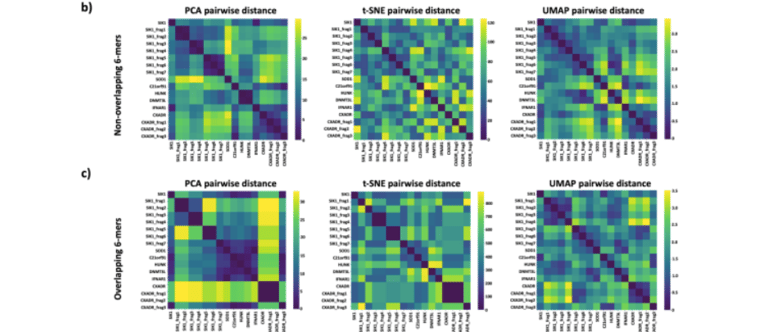Understanding TIPs-VF and its impact on genetic engineering and machine learning
Understanding TIPs-VF (translator-interpreter preseeding), a novel vector-based encoding method that augments DNA representation by integrating sequence, length and positional information, advancing bioinformatics analysis.
Marvin De los Santos
5/4/20252 min read
In this issue of On Preprints from Plethoryt, we highlight a new study by De los Santos, published in bioRxiv, where he develops a novel method to augment the representation of genetic information for machine learning applications. In this preprint, the researcher explore how TIPs-VF can be applied for genetic engineering and synthetic biology workflow, probing that capabilities of TIPs-VF in BLAST-free alignment as well as accurately representing variable-length sequences, uniform codon encoding, resilience to sequence truncation and fragmentation, clustering related viral species based on sequence similarity, detecting key plasmid vector motifs and identifying splice junction patterns.


Understanding TIPs-VF
TIPs-VF is a member of Translator-Interpreter Pre-seeding (TIPs) family of encoding schemes for augmenting the numerical representation of genetic sequences in machine learning. TIPs-VF stands for Translator-Interpreter Pre-seeding for Variable-length Fragments. It is a k-mer-derived, non-overlapping, and frequency-independent encoding scheme. It represents genetic sequences based on the relative proximity and directional alignment of k-mer attributes while incorporating sequence, length, and positional awareness. TIPs-VF has demonstrated enhanced performance in truncation and fragmentation analysis, sequence homology detection, motif assessment, and splice junction identification using variable-length sequences.
The impact
Machine learning is transforming genetic research by enabling the analysis of vast genetic datasets, but existing methods for encoding DNA sequences face limitations like fixed-length dependencies and insufficient biological context. TIPs-VF has been developed to overcome these challenges. This tool allows for dynamic representation of variable-length DNA sequences that maintains important biological features such as codon boundaries and sequence motifs. Initial results indicate that TIPs-VF improves analysis efficiency, aiding in tasks like splice junction identification and gene similarity detection. This advancement could significantly benefit genetic engineering and synthetic biology.
Read more
De los Santos. M, TIPs-VF: An augmented vector-based representation for variable-length DNA fragments with sequence, length, and positional awareness, bioRxiv 2025.02.15.637782; doi: https://doi.org/10.1101/2025.02.15.637782
Interested in learning more?
For researchers and scholars delving into advanced bioinformatics and genomic studies, accessing comprehensive academic support is crucial. Plethoryt offers a suite of services tailored to facilitate in-depth research and dissemination:
Academic Services: From literature reviews to data analysis, our team provides meticulous support to ensure the robustness of your research.
Research Solutions: We assist in designing and implementing research methodologies that align with your study objectives.
Publication Support: Navigating the publication process can be challenging. Our experts guide you through manuscript preparation, journal selection, and submission protocols.
By leveraging Plethoryt's resources, researchers can enhance the quality and impact of their work in the field of genomics and beyond.
Subscribe to our newsletter
Enjoy exclusive special deals available only to our subscribers.